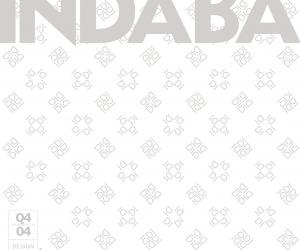First Published in
As the train from London approaches Birmingham New Street Station, a strange blue cloud appears on the horizon. As you get closer you realise it's actually a building
Selfridges department store in the city's Bull Ring shopping centre is the project that brought Future Systems to the attention of the media. Since its completion last year, its massive curved blue roof studded with shiny metal discs has graced many a magazine cover and the store became a symbol of the bravery of the man who commissioned it, retail visionary Vittorio Radice, who has since left Selfridges for Marks & Spencer, from where he was ousted in a management reshuffle.
The organic form and bold colours of Selfridges' Birmingham store are typical of Future Systems design, which continues in the basement of the building, where orange, pink and white walls, sculptural screens and bars are used to create departments and eating areas within the irregular space. Like the camera-shaped NatWest Media Centre practice partners Jan Kaplicky and Amanda Levete designed for Lords Cricket Ground in North West London in the late 1990s, it is an outstanding piece of architecture in every respect.
Ironically, the practice, which celebrates 25 years in business this year, is based in what Kaplicky describes as "a most disgusting shed" - an old London Electricity warehouse in the fashionable Notting Hill district of London. But the huge hangar-like interior with its curved concrete frame offers a lot of space for the 15 or so people in the team. "It's almost like a gallery," says Kaplicky, and it is indeed a great backdrop for futuristic models of buildings, homewares, a car and even a bikini that the team has created.
Sitting on the white sofas there, Czech-born Kaplicky talks of his disappointment that, despite public interest in their work, he and Levete are not always recognised by their architectural peers. Though Selfridges has enjoyed 'amazing success on a local level', he points out bitterly that it was not on the shortlist for the Stirling Prize, the UK's highest architectural award.
"We are too radical for the architectural establishment," he maintains. "And it's getting tougher. The element of 'Englishness' is winning. There is a certain amount of cynicism around."
But he is not totally disheartened. "All you can do is try to create more and more," he says. And, looking round the studio, that is exactly what he and Levete have done.
There are buildings, including two schools and competition entries for the Rouen library in France and a museum for Maserati cars. There is cutlery for Alessi, china and glassware, retail interiors for the likes of teenage fashion chain New Look, private houses, the small city car that has yet to find a manufacturer and the designs for entrances to the subway system of Naples, designed with artist Anish Kapoor. Kaplicky and Levete have also created exhibitions for the likes of car giant Ferrari and furniture including a table for the UK head of fashion publisher Condé Nast. It is a mixed bag.
Kaplicky is fascinated by the change of scale from buildings to small artefacts and the design challenges that it throws up. "It is ten times more difficult to do things for Alessi [than to create a building] because everything is so small," he says.
But architecture is clearly his first love. "We've done [shops for] jewellery. We've done fashion. But we'd love to do a gallery," he says.
He maintains that family homes 'are the most difficult thing in the world' to design, because you have to take account of individual needs and create architecture on a small scale. "Some of the big architectural firms can't now design a family home," he says. "Architects are very rarely judged on quality, but on quantity."
Since its inception, Future Systems has been associated with the use of appropriate, if unconventional materials and organic forms. In the early days there were links with US space agency Nasa and the work was characterised by the use of lightweight materials and technologies such as monococque construction, that were developed for the aerospace industries.
But Kaplicky refutes that "new materials" are in the repertoire. "It's a misconception," he says. "We don't use new materials because they don't exist. We use everything - aluminium, glass, soil or whatever. You can do something magic out of simple things."
As for the approach to design, Kaplicky talks of art and beauty, words not often used in architecture. He says Future Systems' work "may be slightly sexy, which is another dirty word in architecture". And he insists there is no house style.
"[The work] is not based on false intellectualism," he says. "It changes all the time, but when you've done Selfridges, people think you're stuck with [that style] for the rest of your life."
But it still takes an exceptional client to appreciate the talents of Future Systems. Radice, for whom they designed now abandoned trolleys for M&S before his demise there, Alberto Alessi and the boss of Ferrari, for which it even designed uniforms, are among the rare visionaries who can make that leap of faith.
"Companies like M&S can't get it that life is different," Kaplicky says of the retailer's new UK management.
It will be interesting to see which clients present Future Systems with its next big challenge. Chances are, given the current climate of conservatism, it won't be anyone in the UK, but that is not going to keep Kaplicky and Levete out of the limelight. They are hoping to stage an exhibition of their work next year and architectural luminary Deyan Sudjic is authoring a monograph on them for book publisher, Phaidon. Meanwhile, there are plans for books on beauty and on Kaplicky's sketches.
The copyists will no doubt be out in force, notably among architectural students. But it would be good to see another great building come out of that "disgusting West London warehouse".
As the train from London approaches Birmingham New Street Station, a strange blue cloud appears on the horizon. As you get closer you realise it's actually a building
Selfridges department store in the city's Bull Ring shopping centre is the project that brought Future Systems to the attention of the media. Since its completion last year, its massive curved blue roof studded with shiny metal discs has graced many a magazine cover and the store became a symbol of the bravery of the man who commissioned it, retail visionary Vittorio Radice, who has since left Selfridges for Marks & Spencer, from where he was ousted in a management reshuffle.
The organic form and bold colours of Selfridges' Birmingham store are typical of Future Systems design, which continues in the basement of the building, where orange, pink and white walls, sculptural screens and bars are used to create departments and eating areas within the irregular space. Like the camera-shaped NatWest Media Centre practice partners Jan Kaplicky and Amanda Levete designed for Lords Cricket Ground in North West London in the late 1990s, it is an outstanding piece of architecture in every respect.
Ironically, the practice, which celebrates 25 years in business this year, is based in what Kaplicky describes as "a most disgusting shed" - an old London Electricity warehouse in the fashionable Notting Hill district of London. But the huge hangar-like interior with its curved concrete frame offers a lot of space for the 15 or so people in the team. "It's almost like a gallery," says Kaplicky, and it is indeed a great backdrop for futuristic models of buildings, homewares, a car and even a bikini that the team has created.
Sitting on the white sofas there, Czech-born Kaplicky talks of his disappointment that, despite public interest in their work, he and Levete are not always recognised by their architectural peers. Though Selfridges has enjoyed 'amazing success on a local level', he points out bitterly that it was not on the shortlist for the Stirling Prize, the UK's highest architectural award.
"We are too radical for the architectural establishment," he maintains. "And it's getting tougher. The element of 'Englishness' is winning. There is a certain amount of cynicism around."
But he is not totally disheartened. "All you can do is try to create more and more," he says. And, looking round the studio, that is exactly what he and Levete have done.
There are buildings, including two schools and competition entries for the Rouen library in France and a museum for Maserati cars. There is cutlery for Alessi, china and glassware, retail interiors for the likes of teenage fashion chain New Look, private houses, the small city car that has yet to find a manufacturer and the designs for entrances to the subway system of Naples, designed with artist Anish Kapoor. Kaplicky and Levete have also created exhibitions for the likes of car giant Ferrari and furniture including a table for the UK head of fashion publisher Condé Nast. It is a mixed bag.
Kaplicky is fascinated by the change of scale from buildings to small artefacts and the design challenges that it throws up. "It is ten times more difficult to do things for Alessi [than to create a building] because everything is so small," he says.
But architecture is clearly his first love. "We've done [shops for] jewellery. We've done fashion. But we'd love to do a gallery," he says.
He maintains that family homes 'are the most difficult thing in the world' to design, because you have to take account of individual needs and create architecture on a small scale. "Some of the big architectural firms can't now design a family home," he says. "Architects are very rarely judged on quality, but on quantity."
Since its inception, Future Systems has been associated with the use of appropriate, if unconventional materials and organic forms. In the early days there were links with US space agency Nasa and the work was characterised by the use of lightweight materials and technologies such as monococque construction, that were developed for the aerospace industries.
But Kaplicky refutes that "new materials" are in the repertoire. "It's a misconception," he says. "We don't use new materials because they don't exist. We use everything - aluminium, glass, soil or whatever. You can do something magic out of simple things."
As for the approach to design, Kaplicky talks of art and beauty, words not often used in architecture. He says Future Systems' work "may be slightly sexy, which is another dirty word in architecture". And he insists there is no house style.
"[The work] is not based on false intellectualism," he says. "It changes all the time, but when you've done Selfridges, people think you're stuck with [that style] for the rest of your life."
But it still takes an exceptional client to appreciate the talents of Future Systems. Radice, for whom they designed now abandoned trolleys for M&S before his demise there, Alberto Alessi and the boss of Ferrari, for which it even designed uniforms, are among the rare visionaries who can make that leap of faith.
"Companies like M&S can't get it that life is different," Kaplicky says of the retailer's new UK management.
It will be interesting to see which clients present Future Systems with its next big challenge. Chances are, given the current climate of conservatism, it won't be anyone in the UK, but that is not going to keep Kaplicky and Levete out of the limelight. They are hoping to stage an exhibition of their work next year and architectural luminary Deyan Sudjic is authoring a monograph on them for book publisher, Phaidon. Meanwhile, there are plans for books on beauty and on Kaplicky's sketches.
The copyists will no doubt be out in force, notably among architectural students. But it would be good to see another great building come out of that "disgusting West London warehouse".

















